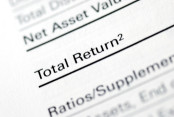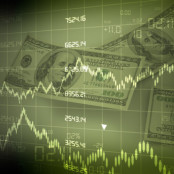
Dividend Investing Ideas Center
Critical Facts You Need to Know About Preferred Stocks
Have you ever wished for the safety of bonds, but the return potential...
















Name
As of 07/25/2024Price
Aum/Mkt Cap
YIELD
Exp Ratio
Watchlist
YTD Return
14.5%
1 yr return
20.2%
3 Yr Avg Return
9.9%
5 Yr Avg Return
15.5%
Net Assets
$1.15 B
Holdings in Top 10
40.6%
Expense Ratio 0.11%
Front Load N/A
Deferred Load N/A
Turnover 13.00%
Redemption Fee N/A
Standard (Taxable)
N/A
IRA
N/A
Fund Type
Exchange Traded Fund
Name
As of 07/25/2024Price
Aum/Mkt Cap
YIELD
Exp Ratio
Watchlist
| Period | SNPE Return | Category Return Low | Category Return High | Rank in Category (%) |
|---|---|---|---|---|
| YTD | 14.5% | 0.0% | 25.9% | 44.97% |
| 1 Yr | 20.2% | -2.9% | 37.5% | 45.33% |
| 3 Yr | 9.9%* | -7.2% | 15.5% | 11.41% |
| 5 Yr | 15.5%* | -2.4% | 108.9% | 7.39% |
| 10 Yr | N/A* | 1.9% | 20.7% | 79.37% |
* Annualized
| Period | SNPE Return | Category Return Low | Category Return High | Rank in Category (%) |
|---|---|---|---|---|
| 2023 | 26.0% | -42.6% | 47.4% | 7.09% |
| 2022 | -19.0% | -56.3% | -4.2% | 24.55% |
| 2021 | 29.9% | -27.2% | 537.8% | 2.06% |
| 2020 | 17.7% | -22.5% | 2181.7% | 18.49% |
| 2019 | N/A | -13.5% | 40.4% | N/A |
| Period | SNPE Return | Category Return Low | Category Return High | Rank in Category (%) |
|---|---|---|---|---|
| YTD | 14.5% | 0.0% | 25.9% | 44.97% |
| 1 Yr | 20.2% | -2.9% | 37.5% | 45.33% |
| 3 Yr | 9.9%* | -7.2% | 15.5% | 11.41% |
| 5 Yr | 15.5%* | -2.4% | 108.9% | 7.39% |
| 10 Yr | N/A* | 1.9% | 20.7% | N/A |
* Annualized
| Period | SNPE Return | Category Return Low | Category Return High | Rank in Category (%) |
|---|---|---|---|---|
| 2023 | 27.8% | -5.0% | 47.4% | 13.69% |
| 2022 | -17.7% | -36.8% | -2.2% | 44.25% |
| 2021 | 31.4% | 3.0% | 537.8% | 6.01% |
| 2020 | 19.9% | -15.8% | 2266.0% | 25.68% |
| 2019 | N/A | -0.4% | 241.3% | N/A |
| SNPE | Category Low | Category High | SNPE % Rank | |
|---|---|---|---|---|
| Net Assets | 1.15 B | 2.34 M | 1.55 T | 54.82% |
| Number of Holdings | 318 | 2 | 4048 | 25.20% |
| Net Assets in Top 10 | 453 M | 848 K | 446 B | 50.88% |
| Weighting of Top 10 | 40.57% | 0.3% | 111.9% | 23.29% |
| Weighting | Return Low | Return High | SNPE % Rank | |
|---|---|---|---|---|
| Stocks | 99.66% | 0.00% | 120.26% | 21.11% |
| Cash | 0.32% | 0.00% | 99.06% | 76.65% |
| Other | 0.01% | -13.91% | 100.00% | 26.73% |
| Preferred Stocks | 0.00% | 0.00% | 2.52% | 86.84% |
| Convertible Bonds | 0.00% | 0.00% | 5.54% | 86.07% |
| Bonds | 0.00% | -0.37% | 92.88% | 85.96% |
| Weighting | Return Low | Return High | SNPE % Rank | |
|---|---|---|---|---|
| Technology | 27.45% | 0.00% | 48.94% | 12.58% |
| Healthcare | 15.43% | 0.00% | 60.70% | 29.74% |
| Financial Services | 13.76% | 0.00% | 55.59% | 43.14% |
| Communication Services | 9.12% | 0.00% | 27.94% | 31.70% |
| Consumer Cyclical | 8.92% | 0.00% | 30.33% | 76.63% |
| Consumer Defense | 6.96% | 0.00% | 47.71% | 43.63% |
| Industrials | 6.21% | 0.00% | 29.90% | 93.95% |
| Energy | 5.08% | 0.00% | 41.64% | 23.28% |
| Real Estate | 2.79% | 0.00% | 31.91% | 46.73% |
| Basic Materials | 2.58% | 0.00% | 25.70% | 48.77% |
| Utilities | 1.70% | 0.00% | 20.91% | 72.30% |
| Weighting | Return Low | Return High | SNPE % Rank | |
|---|---|---|---|---|
| US | 99.66% | 0.00% | 120.26% | 17.58% |
| Non US | 0.00% | 0.00% | 63.90% | 87.96% |
| SNPE Fees (% of AUM) | Category Return Low | Category Return High | Rank in Category (%) | |
|---|---|---|---|---|
| Expense Ratio | 0.11% | 0.01% | 19.75% | 94.02% |
| Management Fee | 0.11% | 0.00% | 1.90% | 12.18% |
| 12b-1 Fee | N/A | 0.00% | 1.00% | N/A |
| Administrative Fee | N/A | 0.00% | 0.85% | N/A |
| SNPE Fees (% of AUM) | Category Return Low | Category Return High | Rank in Category (%) | |
|---|---|---|---|---|
| Front Load | N/A | 1.00% | 5.75% | N/A |
| Deferred Load | N/A | 1.00% | 5.00% | N/A |
| SNPE Fees (% of AUM) | Category Return Low | Category Return High | Rank in Category (%) | |
|---|---|---|---|---|
| Max Redemption Fee | N/A | 0.25% | 2.00% | N/A |
Turnover provides investors a proxy for the trading fees incurred by mutual fund managers who frequently adjust position allocations. Higher turnover means higher trading fees.
| SNPE Fees (% of AUM) | Category Return Low | Category Return High | Rank in Category (%) | |
|---|---|---|---|---|
| Turnover | 13.00% | 0.00% | 268.00% | 29.67% |
| SNPE | Category Low | Category High | SNPE % Rank | |
|---|---|---|---|---|
| Dividend Yield | 1.34% | 0.00% | 25.47% | 54.95% |
| SNPE | Category Low | Category High | Category Mod | |
|---|---|---|---|---|
| Dividend Distribution Frequency | Quarterly | SemiAnnual | Monthly | Monthly |
| SNPE | Category Low | Category High | SNPE % Rank | |
|---|---|---|---|---|
| Net Income Ratio | 1.41% | -54.00% | 2.44% | 7.79% |
| SNPE | Category Low | Category High | Capital Mode | |
|---|---|---|---|---|
| Capital Gain Distribution Frequency | Annually | Semi-Annually | Annually |
| Date | Amount | Type |
|---|---|---|
| Jun 21, 2024 | $0.172 | OrdinaryDividend |
| Mar 15, 2024 | $0.109 | OrdinaryDividend |
| Dec 15, 2023 | $0.176 | OrdinaryDividend |
| Sep 15, 2023 | $0.131 | OrdinaryDividend |
| Jun 23, 2023 | $0.145 | OrdinaryDividend |
| Mar 17, 2023 | $0.121 | OrdinaryDividend |
| Dec 16, 2022 | $0.178 | OrdinaryDividend |
| Sep 16, 2022 | $0.125 | OrdinaryDividend |
| Jun 24, 2022 | $0.155 | OrdinaryDividend |
| Mar 18, 2022 | $0.111 | OrdinaryDividend |
| Dec 17, 2021 | $0.152 | OrdinaryDividend |
| Sep 17, 2021 | $0.114 | OrdinaryDividend |
| Jun 18, 2021 | $0.118 | OrdinaryDividend |
| Mar 19, 2021 | $0.077 | OrdinaryDividend |
| Dec 18, 2020 | $0.142 | OrdinaryDividend |
| Sep 18, 2020 | $0.092 | OrdinaryDividend |
| Jun 19, 2020 | $0.085 | OrdinaryDividend |
| Mar 20, 2020 | $0.149 | OrdinaryDividend |
| Dec 20, 2019 | $0.134 | OrdinaryDividend |
| Sep 20, 2019 | $0.200 | OrdinaryDividend |
Start Date
Tenure
Tenure Rank
Jun 25, 2019
2.93
2.9%
Mr. Bassous is a Vice President with Deutsche Asset Management and has served as a Portfolio Manager in the DWS Group GmbH & Co. KGaA in 2017 with 13 years of industry experience. . Prior to joining Deutsche Bank, Mr. Bassous served as Portfolio Manager at Northern Trust Asset Management where he managed equity portfolios across a variety of global benchmarks. While at Northern Trust, he spent several years in Chicago, London and Hong Kong where he managed portfolios on behalf of institutional clients in North America, Europe, the Middle East and Asia. Before joining Northern Trust in 2007, he worked at The Bank of New York Mellon and Morgan Stanley in a variety of roles supporting equity trading and portfolio management. Mr. Bassous received a BS in Finance from Yeshiva University in 2004.
Start Date
Tenure
Tenure Rank
Jun 25, 2019
2.93
2.9%
■ Joined DWS Group GmbH & Co. KGaA in 2011 with 11 years of industry experience. ■ Head of Passive Portfolio Management, Americas: New York. Bryan Richards is a Director with Deutsche Asset and Wealth Management and has served as a Portfolio Manager in the Passive Asset Management business since 2011. Mr. Richards began his career as an equity analyst at Fairhaven Capital LLC in Boston supporting two Portfolio Managers in a long-short equity strategy. Mr. Richards joined XShares Advisors, an ETF issuer, as a Vice President in 2007, providing analysis on index and fund construction as well as fund operations and performance before being promoted to Director of Fund Operations in 2009. Mr. Richards holds a BS Degree in Finance from Boston College and is a CFA Charterholder.
Start Date
Tenure
Tenure Rank
Jun 25, 2019
2.93
2.9%
Joined DWS Group GmbH & Co KGaA in 2016 with 16 years of industry experience. Mr. Dwyer is a Director with Deutsche Asset Management and has served as a Portfolio Manager in the Passive Asset Management business since 2016. Prior to his current role, Mr. Dwyer was the head of Northern Trust’s International Equity Index ETF and Overlay portfolio management team in Chicago, managing portfolios for North American based clients.Patrick Dwyer is a Vice President at The Northern Trust Company, Chicago. He is a Senior Portfolio Manager and Trader in the Quantitative Management Group of Northern Trust Global Investments and is responsible for the management of international index portfolios. His time at Northern Trust included working in New York, Chicago, and in Hong Kong building a portfolio management desk. Mr. Dwyer has a broad range of experience managing developed, emerging, and frontier index mandates, and currency and future overlay portfolios.Before his current role, Patrick was a portfolio manager in the domestic index portfolio team. Prior to joining Northern Trust in 2003, Mr. Dwyer participated in the Deutsche Asset Management graduate training program. He rotated through the domestic fixed income and US structured equity fund management groups. Mr. Dwyer received a BS in Finance from Rutgers University in 2001.
| Category Low | Category High | Category Average | Category Mode |
|---|---|---|---|
| 0.04 | 39.02 | 7.26 | 2.42 |

Dividend Investing Ideas Center
Have you ever wished for the safety of bonds, but the return potential...

Dividend Investing Ideas Center
If you are reaching retirement age, there is a good chance that you...

Dividend Investing Ideas Center
If you are reaching retirement age, there is a good chance that you...

